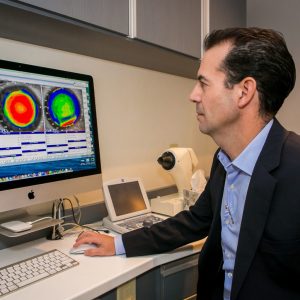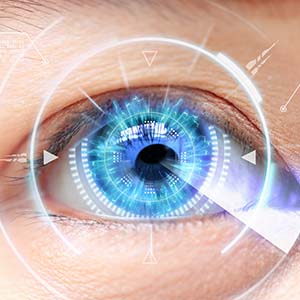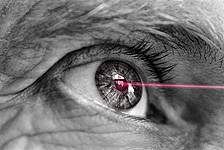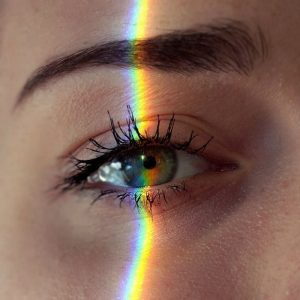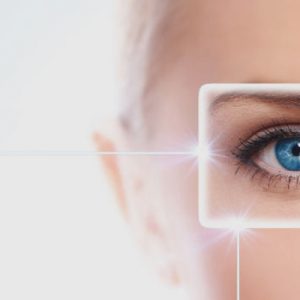Are you thinking of having laser eye surgery?
Laser eye surgery, also called laser refractive surgery, is a common procedure that is performed to eliminate the need for eye wear— both glasses and contact lenses.
Up to 98 percent of patients achieve 20/20 vision with laser eye surgery.
There are a few different types of laser surgeries— the most common include SMILE, LASIK and PRK surgery.
Is laser eye surgery safe?
Yes, laser eye surgery has been proven safe and effective for those who qualify as candidates for the surgery,
Your eye doctor will determine your eligibility for laser surgery based on a comprehensive exam— assessing your overall ocular health, as well as the thickness and shape of your cornea.
What is PRK (photorefractive keratectomy) surgery?
PRK is a first generation laser procedure used for vision correction of nearsightedness (myopia), farsightedness (hyperopia), and astigmatism.
A PRK procedure first involves the removal of the outer layer of your cornea, the epithelium. Then, a laser is used to reshape the inner layers of your cornea to correct your vision.
Who is a candidate for PRK surgery?
- Patients with thin or irregular corneas
- Patients with a predisposition to chronic dry eye
- Patients who are at high risk for eye injury— boxers, athletes, etc.
Are there any disadvantages of PRK?
Yes, the recovery takes slightly longer, around two to four days, and there is the possibility of higher postoperative discomfort.
PRK surgery has the longest recovery time, when compared to the other two surgeries. The complete recovery time is longer because it takes around one week for the corneal cells to grow back, and then between two to six weeks for clear vision to occur. It has been reported that PRK can cause increased discomfort post surgery, when compared to LASIK and SMILE.
PRK can be performed for both eyes at the same time— but keep in mind that you will probably need to take a week off from work and driving before you are fully recovered, and able to resume these activities.
What is LASIK (laser-assisted stromal in-situ keratomileusis) surgery?
LASIK eye surgery is a second generation laser procedure. LASIK is the most commonly performed laser eye surgery used to correct mild to moderate nearsightedness, farsightedness, and astigmatism.
Over 16 million people have had LASIK eye surgery.
LASIK surgery involves the use of two lasers. One laser is used to create a small flap in the corneal epithelium, which is then folded back. A second laser is used to reshape the underlying corneal tissue— thereby correcting vision. Clearer vision is typically noticed immediately post surgery.
Who is a candidate for LASIK surgery?
Patients with regular to high corneal thickness.
The LASIK procedure requires a higher corneal thickness, as a certain range of thickness is required in order to create the flap from the corneal tissue.
When is LASIK not an option?
The following patients are not candidates for LASIK:
- Patients with inadequate corneal thickness
- Patients with thin or irregular corneas
- Patients with predisposition to chronic dry eye symptoms
Are there any disadvantages of LASIK?
Yes. The higher complexity procedure leads to a higher potential for complications post surgery.
Since LASIK surgery uses two lasers and creates a flap during surgery, the patient has a higher risk of potential flap-related complications post-surgery, such as:
- Microscopic wrinkles (striae)
- Irregular astigmatism
- Epithelial ingrowth
- Inflammation
- Dry eye syndrome
While most of these complications are rare, dry eye symptoms are a more common complaint post LASIK surgery.
If you suspect you have an eye condition, contact an eye doctor near you, who can diagnose and treat the condition.
SEE RELATED: LASIK Co-Management
What is SMILE (small incision lenticule extraction) surgery?
SMILE laser surgery is the latest generation of the laser vision correction procedures. It combines the safety of other laser vision technologies with greater comfort and precision, while reducing the risk of complications.
SMILE surgery involves the use of one laser. The laser is used to make a tiny incision in the cornea and remove a small piece of corneal tissue, called a lenticule. The removal of the lenticule reshapes the cornea, thereby correcting vision.
SMILE is a less invasive procedure than LASIK and PRK, as it creates the smallest incision. The corneal incision generally heals within a few days without stitches, and clear vision is noticed almost immediately.
Who is a candidate for SMILE?
- Patients over 22 years old
- Patients with no more than -0.50 diopters of astigmatism
- Patients with stable optical prescriptions for at least 12 months
Are there any disadvantages to SMILE?
Yes. It is not yet available for correction of farsightedness or astigmatism.
- SMILE is currently only available to correct certain types of nearsightedness, up to -10.00 diopters (D) of nearsightedness.
- While LASIK and PRK can correct higher-order aberrations (HOAs) that can cause reduced night vision, SMILE cannot— SMILE may even increase HOAs.
- If additional vision correction is necessary for a residual refractive error after SMILE surgery, PRK is usually the preferred enhancement procedure for optimal results.
- Recovery of vision may take a bit longer than LASIK— typically one to two days.
How long does it take to recover from laser eye surgery?
In most cases, recovery from laser eye surgery is relatively quick and patients will be able to drive and return to work within a few days after the procedure. PRK procedures may take a bit longer— requiring three to five days.
It is normal to experience the following symptoms for several weeks post surgery:
- Blurry vision
- Dry eyes
- Glare
- Halos around lights
In most cases, by two to four weeks post-operation, vision is stable and clear.
An enhancement surgery will be recommended if you continue to have vision difficulties after six months— this procedure will “fine tune” the vision correction.
Which laser surgery is right for me?
Through a comprehensive eye exam, your eye doctor will determine the best laser vision correction option for you.
All three laser surgeries, PRK, LASIK and SMILE, have been proven safe and effective, with over 98 percent success rates for providing clear vision.
LEARN MORE: Optical and Contact Lenses
Schedule an appointment with an eye doctor near you for a consultation, and to discuss the benefits of laser eye surgery.


